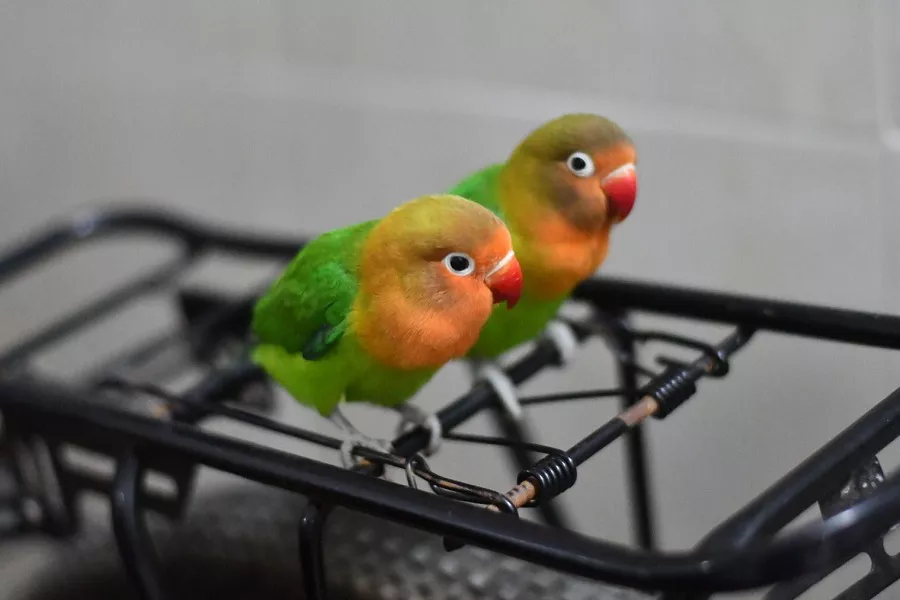Lovebirds, known for their affectionate behavior and vibrant plumage, are popular pet birds that captivate bird enthusiasts around the world. These small parrots are highly social creatures, often forming strong bonds with their human caretakers and fellow lovebirds. One question commonly asked by prospective lovebird owners is whether these birds need to be kept in pairs or if they can thrive as solitary pets.
In this comprehensive guide, we will explore the social nature of lovebirds, their natural behavior in the wild, their interactions with humans, and the advantages and considerations of keeping them in pairs versus as solitary pets.
Understanding the Social Nature of LoveBirds
Lovebirds are renowned for their monogamous behavior in the wild. They form lifelong pair bonds, showing remarkable devotion and affection towards their chosen mate. In their natural habitat, lovebirds live in large flocks, where pairs establish territories and nests within close proximity to one another. This communal environment promotes social interaction and provides a sense of security.
Benefits of Keeping LoveBirds in Pairs
Companionship and Emotional Well-being: Lovebirds thrive on companionship, and being part of a bonded pair fulfills their social needs. Having a partner enables them to engage in preening, feeding, and other social behaviors, which contribute to their emotional well-being.
Mimicking Natural Behavior: By pairing lovebirds, we create an environment that mimics their natural habitat. This allows them to engage in courtship rituals and exhibit natural behaviors such as mutual grooming, sharing food, and vocalizations, promoting their overall health and happiness.
Reduced Stress and Loneliness: Solitary lovebirds may experience stress and loneliness due to the absence of companionship. Pairing them can alleviate these negative emotions, providing a sense of security and reducing the risk of behavioral issues that may arise from prolonged isolation.
Enhanced Mental Stimulation: Interacting with a partner provides mental stimulation for lovebirds. They engage in play, exploration, and communication, which helps keep their minds active and prevents boredom.
Considerations for Keeping LoveBirds Solo
While pairing lovebirds is generally recommended, there are circumstances where keeping a single lovebird can be suitable:
Human Companionship: If you have ample time to interact with your lovebird on a regular basis and meet its social needs, a solitary lovebird can still lead a fulfilling life. Human companionship and interaction can compensate for the absence of another bird.
Previous Negative Experiences: Some lovebirds may have had negative experiences or failed pairings in the past, leading to aggression or territorial behavior. In such cases, it may be better to keep them as solitary pets to avoid potential conflicts.
Limited Space or Resources: If space constraints or resource availability make it difficult to accommodate multiple lovebirds adequately, keeping a single bird can be a suitable alternative. However, it is crucial to provide sufficient mental stimulation and social interaction yourself.
Tips for Keeping Solo LoveBirds Happy
If you decide to keep a single lovebird, here are some essential tips to ensure their well-being:
Allocate Sufficient Time: Dedicate daily quality time to interact with your lovebird. Engage in activities such as talking, offering toys, providing positive reinforcement, and gentle physical contact.
Toys and Enrichment: Provide a variety of toys and enrichment activities to keep your lovebird mentally stimulated. Rotate toys frequently to maintain interest.
Mirror or Reflections: Place a small mirror or reflective surface in the cage to give your lovebird the illusion of having a companion. Be cautious not to overuse mirrors, as excessive reliance on reflections can lead to behavioral issues.
Environmental Stimulation: Create an engaging environment by placing the cage near a window with a view or playing soft music. This can provide additional stimuli that help alleviate boredom.
Consider Second LoveBird: If circumstances change, and you have the capacity to accommodate another lovebird in the future, consider introducing a compatible partner to provide your solitary bird with companionship.
Conclusion
While lovebirds are sociable creatures that thrive when kept in pairs, the decision to house them alone should be made after careful consideration of various factors. If keeping a solitary lovebird, human interaction, mental stimulation, and environmental enrichment are crucial to ensure their well-being. Ultimately, the happiness and welfare of these beautiful birds depend on the effort we put into understanding and meeting their social needs.


 Facebook
Facebook  Instagram
Instagram  Youtube
Youtube 